It had been a long time since Jackie and I were in the Emilia Romagna region of northern Italy: In 2001 we saw operas, ate late-night suppers and visited food producers, a marvelous trip I described at the time. We’d been itching to return, but other destinations (many of them elsewhere in Italy) kept distracting us - very pleasantly.
Finally, in October 2017 we were drawn back: Every autumn, Parma’s Teatro Regio mounts a Verdi Festival featuring an always-interesting selection of works – some well known; others less often performed. These productions are given both at the opera house itself and at other venues in and beyond the city. This year’s repertory included two operas of special interest: Jérusalem, a reworking for Paris of the young Verdi’s second big hit, I Lombardi; and Stiffelio, an unusual and wonderful piece whose original version was thought partially lost until the early 1990s, when it became possible to reassemble the complete score.
The two performances shared a couple of attributes: They were extremely well sung and played by both sets of principals, conductors, choruses and orchestras; and they told their respective stories faithfully and with clarity, thanks to canny and imaginative stagecraft. But the evenings could hardly have been more different. Stage director Hugo de Ana’s Jérusalem, using vivid high-resolution projections to enhance the settings and amplify the action, was a straightforward, credible – yet by no means staid – presentation on a traditional proscenium stage. The plot (which includes a time-out for the lengthy ballet demanded by Verdi’s client, the Paris Opera) is a complicated one – even twistier than that of I Lombardi, which is saying something – and its knots were skillfully loosened if not completely untied. Supertitles in Italian and English helped too.
With Graham Vick’s production of Stiffelio we were in a whole new theatrical world. It was given in the (reconstructed) seventeenth-century Teatro Farnese, with the audience standing amid the action, free to move about at will. Principals sang and acted on raised platforms (also movable) with sufficient furniture and lighting to set a credible scene, but, much of the time, audience members were cheek by jowl with chorus singers and silent actors – most of them indistinguishable from us spectators. After a few bad experiences, I’ve grown leery of “immersive” productions, but this one worked: it was consistently insightful. An important driver of its impact was Mr. Vick’s modern-dress portrayal of the celebrity preacher Stiffelio and his adherents as a far-right, anti-choice, anti-LGBT, family-values-espousing sect. The plot hinges on Stiffelio becoming embroiled in a potential sex scandal (while he is away on a preaching mission, his wife is seduced by a ne’er-do-well). The ensuing hypocrisy and attempts at a cover-up will be familiar to all of us who follow the news, and the proximity of audience and performers lent startling immediacy to the drama. An uncommonly lengthy rehearsal period of nine weeks brought this complicated project to fruition – and enabled the singers to display intimate small-scale acting: not something you see a lot of in opera houses.
Did this walkabout approach do the musical side of things any good? No: Balances were askew, with the orchestra seated at one end of the Teatro Farnese and the cast dispersed throughout the rest of the big space. When standing near a large-voiced singer, we could barely hear the orchestra, and ensembles could sound imprecise because of the way the performers were scattered. But for me – and, judging by the applause, for most of the audience – it was worth it for the heightened emotional intensity.
If I have a regret, it’s that we’d neglected Parma’s Verdi Festival for all these years. From now on, we’ll try to keep up to date on its schedule, either on the useful Operabase website or on the theater’s own site.
There was more to our four days in Emilia Romagna than these performances, and I’ll soon have some recommendations for sights to see, places to stay and things to eat and drink.
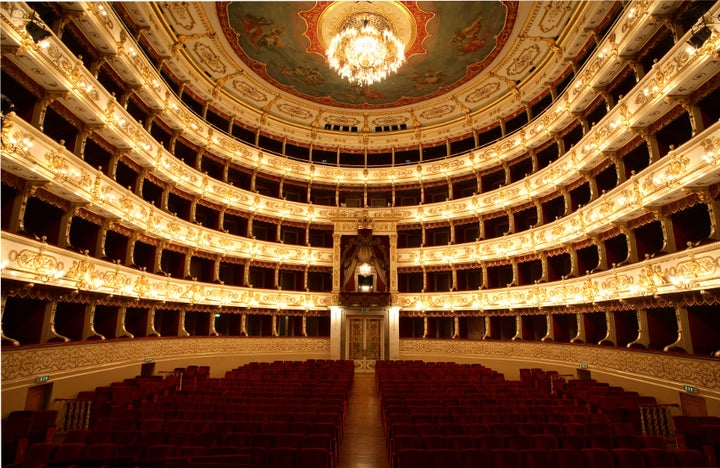
Parma’s Teatro Regio, home of the annual Verdi Festival
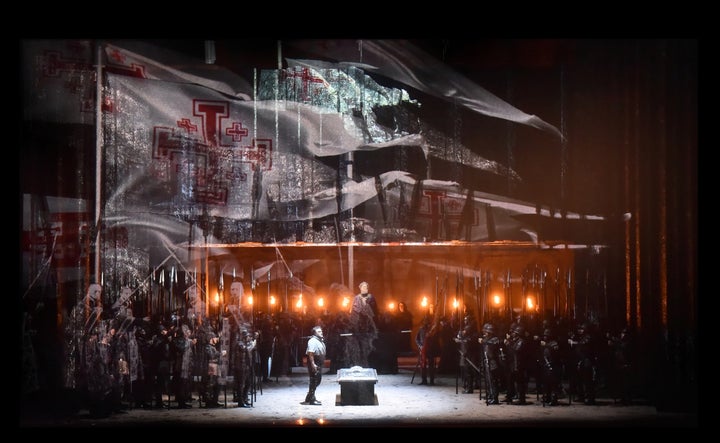
Verdi’s Jérusalem at the Teatro Regio, Parma

Verdi’s Jérusalem at the Teatro Regio, Parma
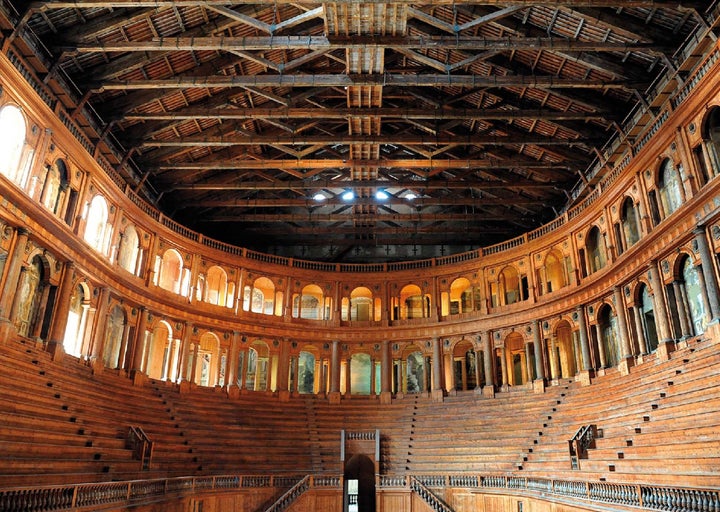
The seventeenth-century Teatro Farnese, where Verdi’s Stiffelio was given
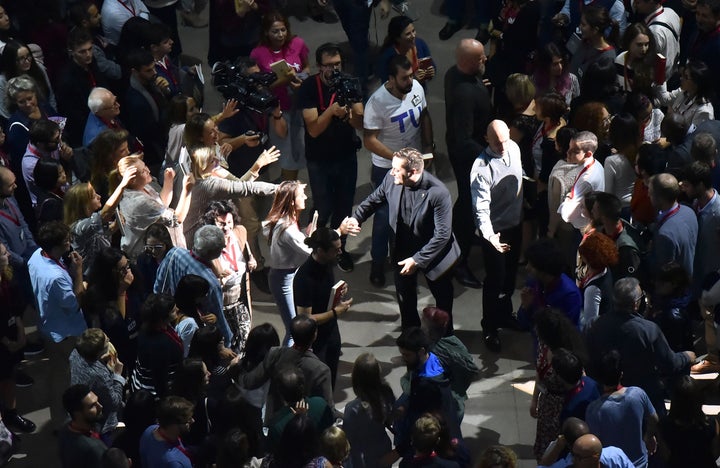
Verdi’s Stiffelio: The title character (Luciano Ganci) and his adoring followers mixed up with audience members
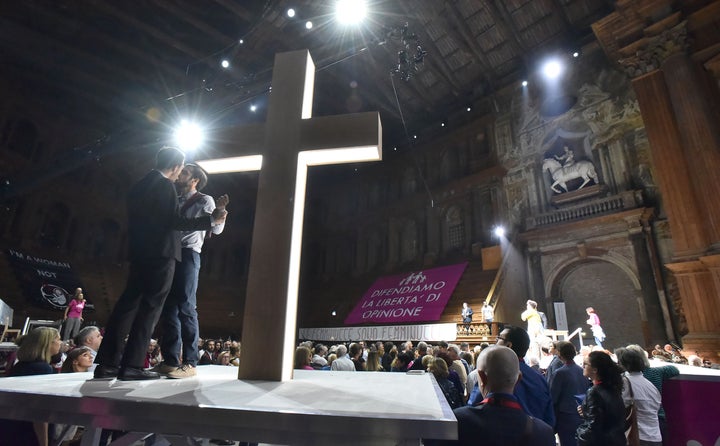
Stiffelio confronting his wife’s lover Raffaele (Giovanni Sebastiano Sala)
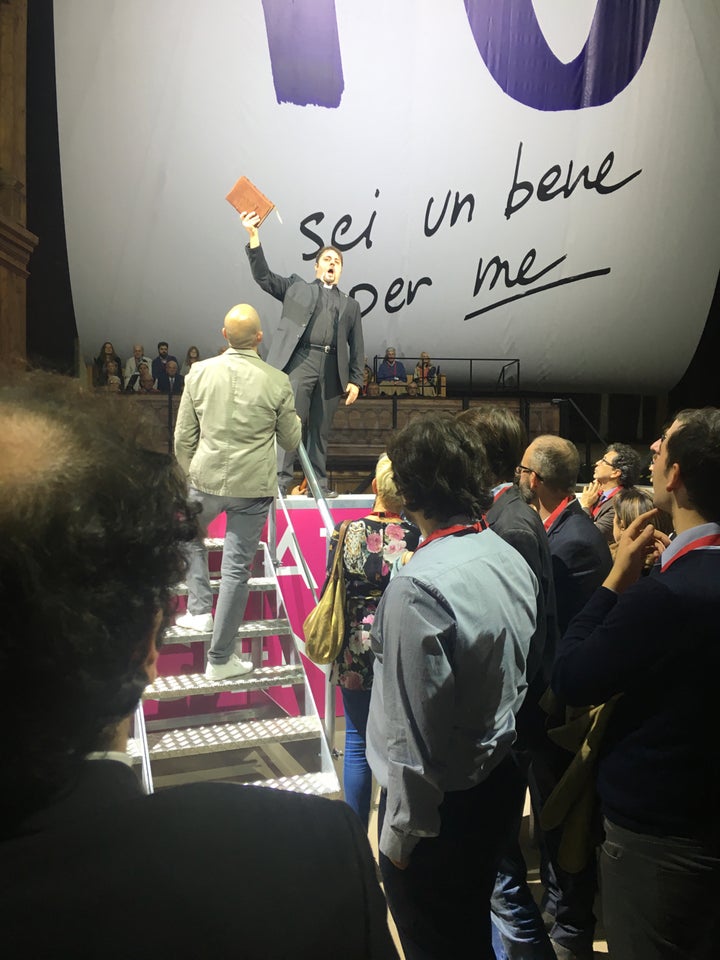
Stiffelio preaching to his followers
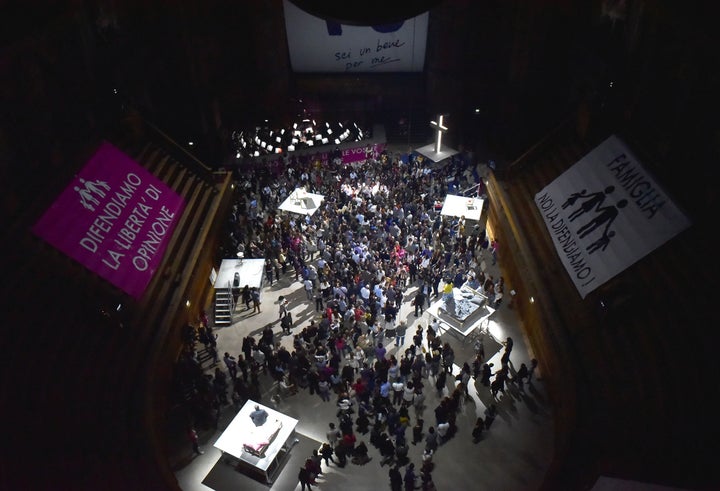
An overview of the Stiffelio audience and performers, all jumbled together